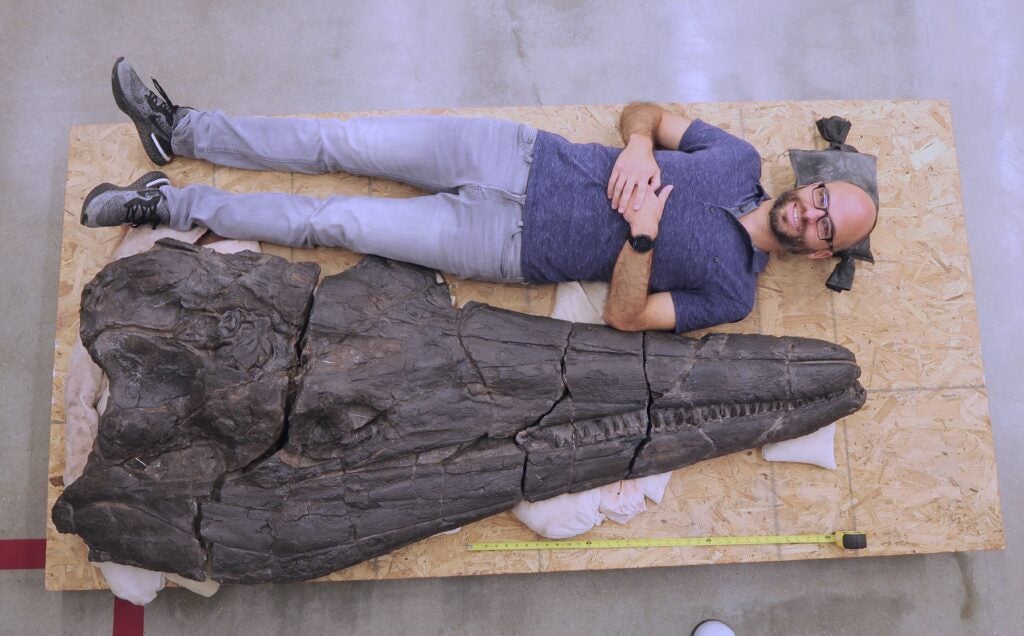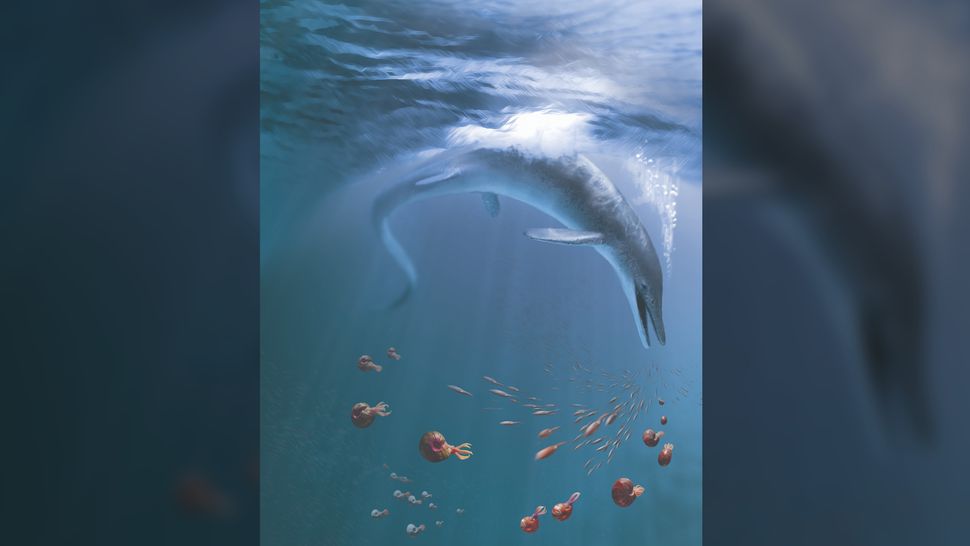Science
Related: About this forumThese ancient marine reptiles got very big, very fast (PopSci)
By Kate Baggaley | Published Dec 27, 2021 8:00 AM
About 246 million years ago, a marine reptile roughly the length of a humpback whale patrolled the seas over present-day Nevada.
This ichthyosaur wasn’t just remarkable because of its massive size, according to scientists who recently analyzed a partial skeleton recovered from the Augusta Mountains. The new species notably lived just a few million years after the very first ichthyosaurs—which were roughly dog-sized—appeared in the fossil record. This means these swimmers supersized themselves much more quickly than whales did, according to research reported on December 24 in Science.
“This fossil combined with the [other] fauna that we’re finding in Nevada is a true testament to how resilient life is, and how fast evolution can proceed if the environmental conditions are right and the opportunity is there,” says study coauthor Lars Schmitz, a paleontologist at the W.M. Keck Science Department of Claremont McKenna, Scripps, and Pitzer Colleges. “Even after a massive extinction event where the entire world is in turmoil, life can diversify really, really fast.”
***
The ichthyosaur fossil that Schmitz and his colleagues analyzed includes a skull more than 6 feet long, as well as parts of the right arm {sic}, spine, and shoulders. The new species, which they named Cymbospondy{l}us youngorum, had a long snout filled with pointed teeth and a slender body.
Based on the size of its skull, the researchers estimated that C. youngorum would have reached roughly 58 feet long and weighed just under 50 tons. “This one is much larger than all the other ichthyosaurs that lived earlier and at the same time, so [it’s] essentially the first giant in the oceans,” Schmitz says.

Skull of Cymbospondylus youngorum with researcher Lars Schmitz for scale. Martin Sander
***
more: https://www.popsci.com/science/giant-ichthyosaur-evolution/
https://www.science.org/doi/10.1126/science.abf5787 Note: only the abstract is free. Full article behind a paywall
To be clear, Cymbospondylus is a long-known genus; the species is new.
Native Nevadans will note that Berlin-Icthyosaur State Park is in the same area; it's not clear whether the new fossil was found within park boundaries. The exact locations of fossil finds are often closely held to prevent damage from poachers.
Judi Lynn
(160,656 posts)By Laura Geggel published 15 days ago
The beast shows that ichthyosaurs grew big really fast.

An illustration of Cymbospondylus youngorum in a Triassic ocean teeming with life. Ammonites and squid were abundant in this open ocean environment. (Image credit: Illustration by Stephanie Abramowicz, courtesy of the Natural History Museum of Los Angeles County (NHM).)
A sea monster that lived during the early dinosaur age is so unexpectedly colossal, it reveals that its kind grew to gigantic sizes extremely quickly, evolutionarily speaking at least.
The discovery suggests that such ichthyosaurs — a group of fish-shaped marine reptiles that inhabited the dinosaur-era seas — grew to enormous sizes in a span of only 2.5 million years, the new study finds. To put that in context, it took whales about 90% of their 55 million-year history to reach the huge sizes that ichthyosaurs evolved to in the first 1% of their 150 million-year history, the researchers said.
"We have discovered that ichthyosaurs evolved gigantism much faster than whales, in a time where the world was recovering from devastating extinction [at the end of the Permian period]," study senior researcher Lars Schmitz, an associate professor of biology at Scripps College in Claremont, California, told Live Science in an email. "It is a nice glimmer of hope and a sign of the resilience of life — if environmental conditions are right, evolution can happen very fast, and life can bounce back."
Researchers first noticed the ancient ichthyosaur's fossils in 1998, embedded in the rocks of the Augusta Mountains of northwestern Nevada. "Only a few vertebrae were sticking out of the rock, but it was clear the animal was large," Schmitz said. But it wasn't until 2015, with the help of a helicopter, that they were able to fully excavate the individual — whose surviving fossils include a skull, shoulder and flipper-like appendage — and airlift it to the Natural History Museum of Los Angeles County, where it was prepared and analyzed.
More:
https://www.livescience.com/ichthyosaurs-grew-to-big-sizes-fast